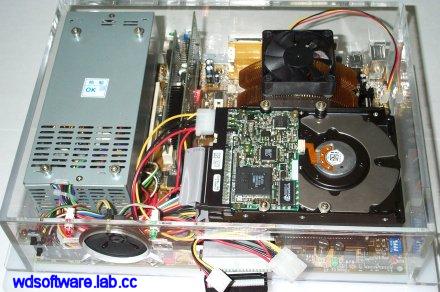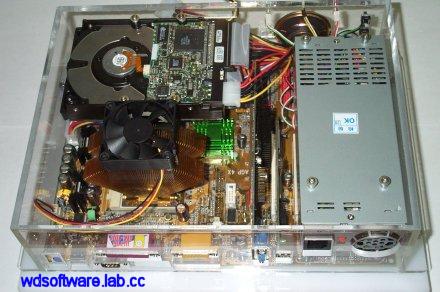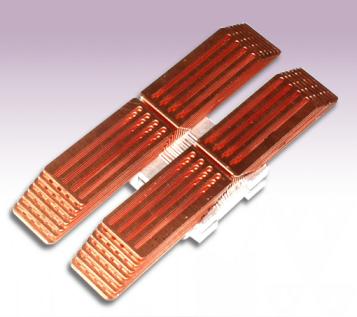Making of the Portable Athlon (7/10)
Posted by Wesley onAs the first phase of the system is complete, I gave it the name of WDS-APX-0, APX standing for Athlon Portable Experimental and 0 meaning prototype. Here is how the case looks on a more closed-up manner. I'm sure some of you have already seen the pictures of the coming pages, as I've already revealed these from time to time. Note that the arrangements and the looks are that of version 1.0. I've made some changes as saw fit since the pictures were taken.


The changes were mostly from the overclocking, as expected. The system by itself runs perfectly fine at default settings, but I couldn't let it sit like that, now that it has my T-bird CPU, meaning this would have to take the place my main system. I gave it my Corsair PC133 256MB RAM and took the KingMax RAM out because the hard disk passed over the RAM with enough space in between and I needed the extra 128MB. Running a 750MHz CPU at over 1GHz posed some heat problems, and I had to give up the 1113MHz, 1.85V setting I'd been using, and instead tried to find the highest speed that ran stably on default 1.70V setting, which was 1034MHz. That still didn't solve the heat problem completely, so I replaced the 60mm fan to a Sunon 2.6W one. It was more noisy and my roommate hated it, but I didn't have much choice.
Then there was the video card problem. The card came with only a black square heatsink without a fan. I tried on a 40mm fan on it, but it didn't help much on overclocking, as I was pretty much stuck to the default 190MHz core speed. So I decided to take the heatsink off. Shockingly, the heatsink was just loosely attached on the core by a double-sided tape and fell off with relative ease. It was just touching the corners of the chip. I guess it was small wonder the card was so cheap. I put a lapped Pentium cooler that's been rolling around my collection of old components onto the core instead, and tied it with a fishing wire. It was a lot better, but the fan was old, so it made grinding noises for about 5 minutes of turning on the system, which was often annoying.
Having shown the case to them, the people at Zalman were quite interested and decided to help out on the cooling and noise issue. The noisy CPU fan was twice replaced with the ones that's been in the lab. Many variations on the attachment method was tried out and initially, the two-fan design won out due to lower noise and good cooling. The Sunon fan was attached to the side of the heatsink with an adaptor that is screwed on the side of the vice that holds the fins. A low-profile Adda fan was placed where the Sunon fan was originally put (the top part of the case). A couple of weeks later, they were readying a new cooler design and a prototype was tried on my system. However, because of the design of the case being unusual, and because it was a prototype, it didn't fare well when the case was closed. The fan used on it, however, performed well, and now the two-fan design was replaced with the single-fan design again, this time with the new fan.

Meanshile, on the video card side, they were producing their new copper video card heatsink, ZM17-CU. I had the priviledge of attaching this on my video card, replacing the noisy Pentium cooler. Afterwards, I put the 60mm Adda fan that was taken off the duty of cooling the CPU onto this video card heatsink, since ZM17-CU does not have any fan attached by default.